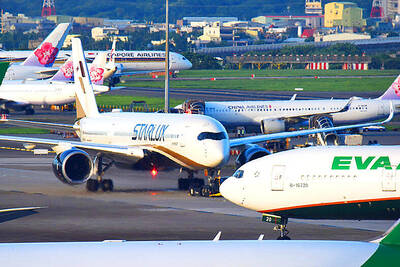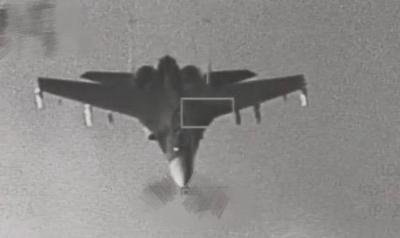Citizens and activist groups yesterday raised doubts over the maximum limits set by the Ministry of Health and Welfare for the levels of radioactive contamination permitted in imported foodstuffs, including from post-Fukushima nuclear disaster Japan, and urged tighter regulations.
In a roundtable discussion on radiation and food safety organized by the National Association for Radiation Protection in Taipei, Tokyo-based Taiwanese writer and anti-nuclear advocate Liu Li-erh (劉黎兒), and officials from the Food and Drug Administration and the Atomic Energy Council, exchanged views on the current food-radiation safety limits and other relevant regulations.
Liu said that Taiwan’s permissible limit for total cesium radionuclides (cesium-134 and cesium-137, which are radioactive isotopes associated with increased cancer risks) in food products, which stands at 370 becquerels per kilogram (Bq/kg), is an outdated standard that was set in response to the Chernobyl disaster in 1986.
At the time the calculation was based on a person being exposed to 5 millisieverts (mSv) of radiation per year.
“The 2007 recommendation of the International Commission on Radiological Protection [ICRP] stated that the dose limit of public exposure is 1mSv per year,” Liu added, urging the authority to raise the threshold to 100Bq/kg, which is also the limit set in Japan.
Liu was especially critical of the ministry’s attempt to ease the standard for total cesium radionuclides in food to 600Bq/kg in June 2012, which she called “a surreptitious and inconceivable move made when the legislature was in recess,” and when Japan had just tightened the limit from 500Bq/kg, set right after the Fukushima catastrophe, to 100Bq/kg.
Food and Drug Administration’s Northern Center for Regional Administration Director Feng Jun-lan (馮潤蘭) dismissed the allegation, saying that it was not a stealthy move, but one announced in accordance with due bureaucratic process.
“The [proposed] change was not limited to relaxing [the standard]. The announcement also included standards that were made stricter and the addition that radionuclides should be tested,” Feng said, adding that Taiwan’s limits are actually lower than in many other countries and the change was made to be “in line with international standards.”
However, the proposed amendment was met with strong opposition and skepticism after an insider bureaucrat drew the public’s attention to the matter, and has since been in limbo.
Feng emphasized that although the nation’s radiation limit is set at 370Bq/kg for foodstuffs, in practice imports from Japan are not allowed to exceed 100Bq/kg due to Japan’s domestic restrictions.
“More than 40,000 food products from Japan had been inspected from 2012 to the end of 2013. A total of 192 items had tested positive for Iodine-131 or cesium-134 and cesium-137, but the doses were all within permitted levels,” she added.
Liu and the representatives of groups in the audience urged the government to make public the names of the companies that imported the radiation-positive foodstuffs, but Feng said there are no existing regulations allowing the government to release information about the food companies involved.
The groups said the government was “passive in protecting its people,” pointing out that while Hong Kong has a limit of 1,000Bq/kg for total cesium radionuclides in food, it nevertheless gives information about the radiation-contaminated food products regardless of the doses, thereby pressuring the food companies involved to pull the products off shelves on their own initiative in order to preserve their reputations.

Trips for more than 100,000 international and domestic air travelers could be disrupted as China launches a military exercise around Taiwan today, Taiwan’s Civil Aviation Administration (CAA) said yesterday. The exercise could affect nearly 900 flights scheduled to enter the Taipei Flight Information Region (FIR) during the exercise window, it added. A notice issued by the Chinese Civil Aviation Administration showed there would be seven temporary zones around the Taiwan Strait which would be used for live-fire exercises, lasting from 8am to 6pm today. All aircraft are prohibited from entering during exercise, it says. Taipei FIR has 14 international air routes and

Taiwan lacks effective and cost-efficient armaments to intercept rockets, making the planned “T-Dome” interception system necessary, two experts said on Tuesday. The concerns were raised after China’s military fired two waves of rockets during live-fire drills around Taiwan on Tuesday, part of two-day exercises code-named “Justice Mission 2025.” The first wave involved 17 rockets launched at 9am from Pingtan in China’s Fujian Province, according to Lieutenant General Hsieh Jih-sheng (謝日升) of the Office of the Deputy Chief of the General Staff for Intelligence at the Ministry of National Defense. Those rockets landed 70 nautical miles (129.6km) northeast of Keelung without flying over Taiwan,

The Ministry of National Defense (MND) today released images of the military tracking China’s People's Liberation Army (PLA) movements during the latest round of Chinese drills around Taiwan. The PLA began "Justice Mission 2025" drills today, carrying out live-fire drills, simulated strikes on land and maritime targets, and exercises to blockade the nation's main ports. The exercises are to continue tomorrow, with the PLA announcing sea and air space restrictions for five zones around Taiwan for 10 hours starting from 8:30am. The ministry today released images showing a Chinese J-16 fighter jet tracked by a F-16V Block 20 jet and the

City buses in Taipei and New Taipei City, as well as the Taipei MRT, would on Saturday begin accepting QR code payments from five electronic payment providers, the Taipei Department of Transportation said yesterday. The new option would allow passengers to use the “transportation QR code” feature from EasyWallet, iPass Money, iCash Pay, Jkopay or PXPay Plus. Passengers should open their preferred electronic payment app, select the “transportation code” — not the regular payment code — unlock it, and scan the code at ticket readers or gates, General Planning Division Director-General Liu Kuo-chu (劉國著) said. People should move through the